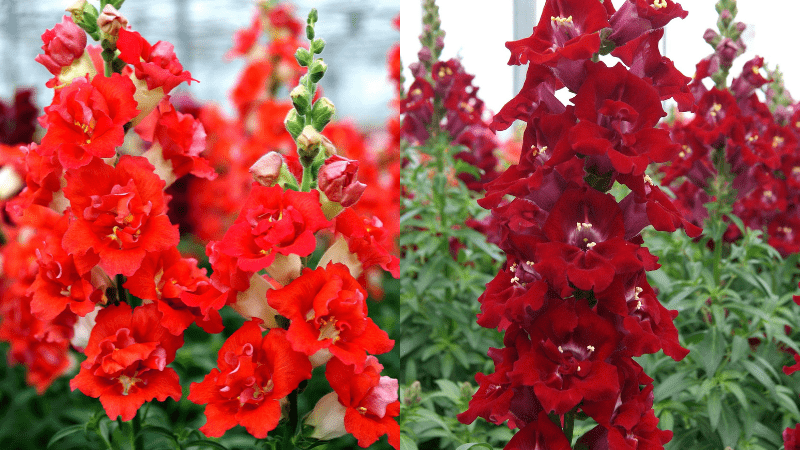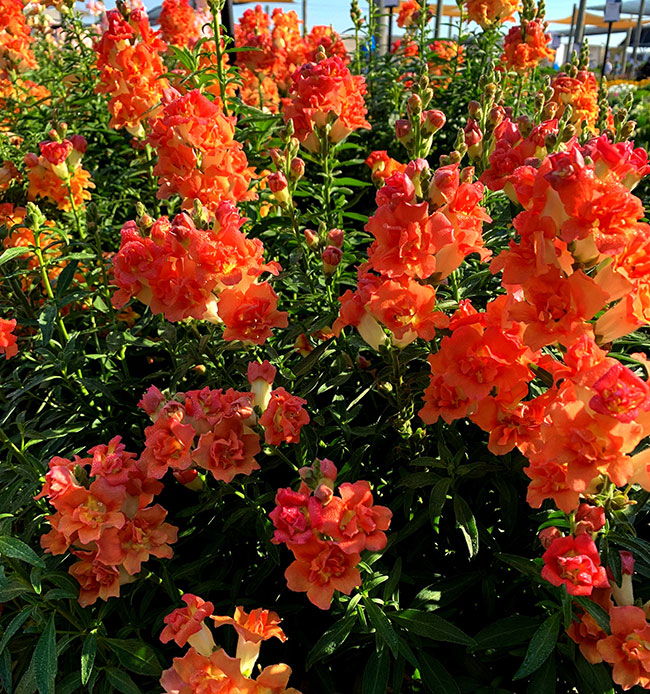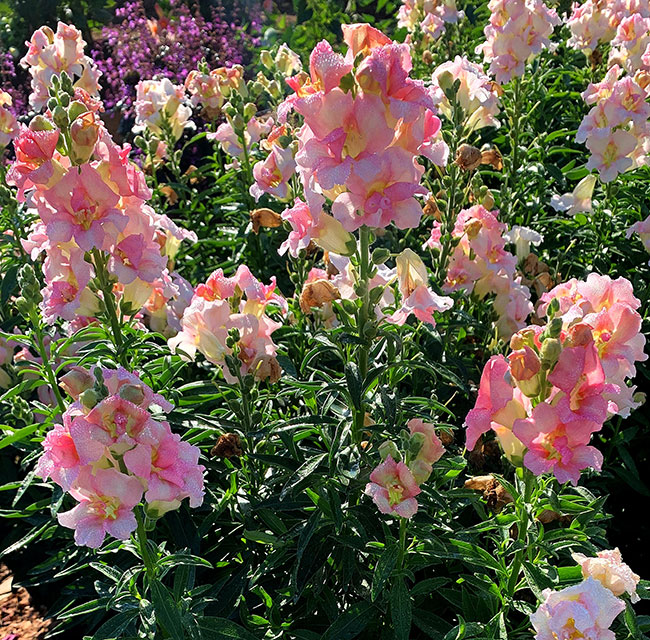
Culture Report: Snapdragon DoubleShot series
Most of the breeding in snapdragons, Antirrhinum majus, over the last 25 years has been in compact genetics, uniform varieties that are mounded in shape, and usually wider than they are tall. These types are popular because they fit into bed use with their compact habit. But trends for a number of years have been more vigorous plants, bigger items that will add dimension to planting beds, landscape and large containers, and put on a grand floral show.
When looking for tall items, snapdragons are often overlooked. What many people don’t realize is that snapdragons are quite hardy plants when acclimated to cool/cold weather. I have personally seen snapdragon flowers frozen solid and thaw the next day to be as if they never encountered a freeze! They make an exceptional bedding plant for fall and winter use in the south and many coastal climate areas. But when breeding for culture under short-day conditions, particular attention must be paid to the ability to develop strong stems that can carry the flowers properly.
We at Hem Genetics are very excited to introduce DoubleShot, a new series of tall snapdragons perfect for home garden and professional landscape use, as well as in large patio containers. These are the only tall series that produce open-faced (peloric) double flowers profusely on well-branched plants with strong stems. They grow to a height of 20 inches, with a plant diameter reaching approximately 16 inches. Our breeders paid particular attention to selection for strong stems especially under short-day production to make the series wellsuited as a winter bedding crop. DoubleShot also has double use as an ideal item to utilize for Spring and Fall season extenders anywhere in the country, to include in the assortment when pansies and violas are also marketed.
For the season 2023-24, we have introduced five colors in the DoubleShot series: Appleblossom, Red, Peach, Yellow, and Orange Bicolor, which received an AAS award for both its performance in the ground and in containers. And more colors are in the works. The flowers have a mild bubble gum fragrance and are extremely attractive to pollinators and hummingbirds. Established plants in the garden are frost and short-term freeze tolerant.
In the garden, DoubleShot is quite easy to maintain. Plant in any good garden soil that drains well in full sun locations for best performance. After planting, water daily for the first week or two to allow the root system to get established. Deadhead old flower stems to prevent seed production to achieve the maximum flowering potential. Their strong, taller stems make them perfect for use as a cut flower. One of the common comments by the AAS judges was that because of the strong stems, the plants were also very resistant to damage from strong winds in the garden.

Plug Production
Seeds per cell: One seed per plug cell.
Vermiculite cover: No cover, light required for germination.
Stage 1
Germination
Media pH 5.5 to 5.8, fertilizers: EC 0.5 to 1.0 (75 to 150 ppm N). Temperature 64 to 72° F growing and medium temperature. Radicle emergence will occur in 3 to 4 days. Snapdragons are very susceptible to high salt levels in all stages.
Stage 2
Stem and cotyledon
Keep media moist, temperature can be lowered to 64° F. Reduce moisture levels to obtain optimum root growth and to prevent fungal diseases. Prevent wet foliage after nightfall. A broad-spectrum fungicide may be applied to prevent damping off. Under low light conditions, supplemental lighting is recommended to promote compact strong seedlings. Extending day length to 14 hours, 4.500 to 10.000 lux (420 to 930 fc) will promote early flowering.
Stage 3
Growth and development
Temperature days 64° F EC 1.2 to 1.5 (180 to 225 ppm N); allow media to dry between watering. Wet, cold and low light conditions may result in tip abortion.
Stage 4
Ready for transplanting
Temperature can be dropped to 60 to 64° F; lower temperatures and wet conditions may result in poor growth and leaf chlorosis. Allow media to dry between watering but avoid wilting. EC 1.2 to 1.5 (180 to 225 ppm N) do not exceed levels over 1.0 to prevent root issues.
PRODUCT INFORMATION AND FINISH CULTURE
Series: Antirrhinum majus
Family: Scrophulariaceae
Type: Hardy annual
Mature plant size: 18 to 20 inches high, 14 to 16 inches spread
Popular uses: Tall bedding plant or specimen in the garden, tall feature in large container plantings. Ideal product to use for early and late season sales as hardened-off plants will take frosts and light freezes without damage to plants or flowers.
Recommended pot sizes: 5 to 6 inch pots or larger, 2 quart, 1 or 2 gallon pots. Plant one plant per pot up to 6 inches or 1 gallon, 3 plants per pot in larger containers.
Water: Evenly moist, avoid wet conditions.
Daylength sensitivity and light: DoubleShot is daylength neutral, will flower any time of year, ideal winter bedding items in the deep Southern areas. Grow snapdragons under full sun conditions, no shading. The optimum light level is 18.000 to 22.000 lux (1800 – 2200 fc). Long days >14 hours will promote earlier flowering.

Growing medium: Any well-draining growing medium is good for snapdragons. Soil pH of 5.5 to 5.8 is ideal, avoid exceeding a soil pH of 6.2.
Growing temperatures: For active growth, snapdragons prefer night temperatures over 58° F and day temperatures over 60° F.
Crop timing, sowing to finish (Northern hemisphere): October through March sowing – 15/16 weeks, and April through September sowing – 14/15 weeks.
Fertilization: Balanced N:P:K fertilizer as needed EC1.5 to 2.0 (225 to 300 ppm N). High levels of ammoniacal nitrogen may diminish stem strength and cold tolerance.
Plant growth regulators: Snapdragons respond to Daminozide (Dazide, B-nine) Chlormequat (Cycocel) and Paclobutrazol (Bonzi); follow manufacturers’ directions.
Potential diseases: Botrytis blight, rhizoctonia, rust, pythium, powdery and downy mildew
Potential pests: Spider mites, thrips, aphids and whitefly
Tips: Young plants can be given a soft pinch to promote earlier branching. Unpinched plants will flower with the main stem opening first, followed by secondary branches, pinched plants will bloom with a flush of several branches blooming initially. However, pinching will add 10 to 14 days to the finish timing.


 Video Library
Video Library 




















